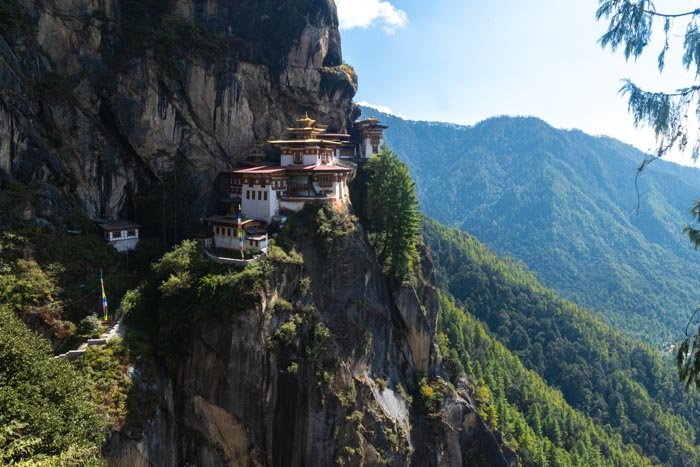As the world’s richest and largest emitting countries are struggling to reduce emissions, Bhutan became the first carbon negative nation.
Fog-enshrouded temples nestled in mountainous terrains make Bhutan attractive to tourists.
But this tiny Asian nation in the Himalayas has an added bonus. It’s the first to achieve carbon negativity through its vast forests.
- In fact, forests cover about 75% of the small nation’s land area.
Bhutan enshrined in its constitution a commitment to protect 60% of its territory as forest land.
This is key to its carbon neutrality as its forests sequester about 9 million tons of carbon each year while the country generates only 2 million tons in 2020.
What Does Carbon Negative Mean?
To be carbon negative means an entity’s actual emissions are outweighed by the footprint it offsets. Bhutan is the first country to achieve carbon negativity.
Not only is the small kingdom a net sink for carbon; it also offsets its emissions by exporting renewable energy. It exports a lot of hydroelectric energy to its neighbor India.
As mentioned, its vast forestland absorbs far way more carbon (9 million tons) than the country emits (2 million tons).
Beyond abating carbon via sequestration and renewables, Bhutan is also preserving biodiversity.
The country allows wildlife to travel between different preserved areas of nature.
GNH: Happiness over Money?
Other countries are having hard times to reduce emissions, even the richest ones.
So, many are wondering how did the small nation with less than 1 million population manage to become carbon negative.
The answer lies in a concept which Bhutan is famous for – GNH or Gross National Happiness. It’s one of the major governing principles of the country that prioritizes happiness over GDP.
- It recognizes the importance of economic growth. But it also asserts that it must not undermine the nation’s pristine environment.
Thus, the country’s growth strategies are then suited to maximize happiness rather than GDP.
Bhutan’s GNH index has two important parts:
- sustainable socio-economic development
- environmental conservation
Bhutan’s happiness-based philosophy is a key factor in driving its green policies.
In official documents relating to climate change, the government places strong emphasis on the rights of future generations to environmental safety and the enjoyment of natural resources.
This approach makes intergenerational climate justice a key enabler in affecting climate action.
In summary, here are the ways how Bhutan became a carbon negative nation:
- It bans log exports
- Preserves 60% of the country’s total land area under forest cover for all time
- Uses free hydroelectric power from its bountiful rivers rather than fossil fuels
- Rural farmers are given free electricity
Add to this, Bhutan has also secured long-term funding for its projects with “Bhutan for Life”. It’s a fund developed in partnership with the World Wildlife Fund in 2017 to finance the nation’s sustainability and conservation efforts.
Besides preserving protected areas, the project also finances R&D in renewable energy. It will also encourage more sustainable living in local communities.
Such efforts reduce the country’s negative impact on the environment while allowing it to capture more carbon than it emits.
Yet, it’s important to note that Bhutan is a small, non-industrialized nation. This could mean that its approach to curb emissions may not be suitable for larger countries like the U.S.
Still, its accomplishments do show what’s possible when environmental sustainability is at the center of the political agenda.
What does the Bhutan experience tell us?
Bhutan achieved what all participating countries of the Paris Agreement hope to achieve by 2050.
The fact that it reached net zero status and continues to draft bigger plans to remain so is something to which all countries may aspire.
The constitution and the culture of Bhutan go together to make net zero a reality. It protects its major carbon sink: the forests.
- While the exact Bhutanese model for reducing emissions may be hard to apply to larger industrialized countries, the principle of prioritizing environmental sustainability as part of promoting happiness may be a good start.
But there’s no guarantee that other nations can catch up in time to prevent Bhutan from suffering from the adverse effects of climate change.
As the former Bhutanese prime minister Tshering Tobgay once said,
“After all, we’re here to dream together, to work together, to fight climate change together, to protect our planet together… Because the reality is we are in it together.”
Bhutan may be the first carbon negative nation but many others could also follow.

